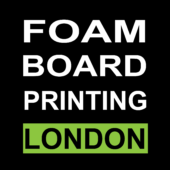Carving Foam Board: A Beginner’s Guide
Foam board, also known as foam core, is a versatile material used in various crafts, hobbies, and DIY projects. Its lightweight yet sturdy structure makes it ideal for creating architectural models, prototypes, displays, and artwork. One of the primary techniques employed when working with foam board is carving. Carving allows you to sculpt intricate designs and shapes, adding depth and dimension to your creations. In this guide, we’ll walk you through the process of carving foam board, from selecting the right tools to mastering carving techniques.
Tools and Materials:
Before diving into the carving process, gather the necessary tools and materials:
- Foam Board: Choose a high-density foam board for better durability and ease of carving.
- Utility Knife or X-Acto Knife: A sharp blade is essential for clean and precise cuts.
- Carving Tools: Consider using a variety of tools such as sculpting knives, gouges, and wire cutters for different carving techniques.
- Protective Gear: Wear safety goggles and a dust mask to protect your eyes and lungs from foam particles.
Carving Techniques:
- Basic Cutting: Start by outlining your design on the foam board using a pencil or marker. Then, carefully cut along the lines using a utility knife or X-Acto knife. Apply gentle pressure to avoid tearing the foam board.
- Relief Carving: Relief carving involves removing layers of foam to create a three-dimensional design. Begin by cutting the outline of your design, then gradually carve away excess foam to achieve the desired depth and detail. Work slowly and methodically, making shallow cuts to avoid overcutting.
- Texturing: Texture adds realism and visual interest to your foam board creations. Experiment with different carving tools to create various textures such as wood grain, stone, or fabric. Use small, controlled movements to sculpt intricate details.
- Contour Carving: Contour carving involves shaping the surface of the foam board to create curved or rounded forms. Use a combination of slicing and scooping motions to sculpt smooth contours. Take your time and work gradually, refining the shape until it meets your specifications.
Finishing Touches:
Once you’ve completed the carving process, it’s time to add finishing touches to your foam board creation:
- Sanding: Lightly sand the surface of the foam board to smooth out any rough edges or imperfections. Use fine-grit sandpaper and a gentle touch to avoid damaging the foam.
- Sealing: Apply a coat of sealant or primer to the foam board to protect it from moisture and damage. Choose a sealant that is compatible with foam materials and provides a smooth, even finish.
- Painting: Use acrylic paints or spray paints to add color and detail to your carved foam board creation. Allow the paint to dry completely before handling or displaying your artwork.
Conclusion:
Carving foam board is a rewarding and creative process that allows you to bring your ideas to life in three dimensions. With the right tools, techniques, and a little patience, you can create stunning sculptures, models, and artwork that showcase your talent and imagination. Whether you’re a beginner or an experienced crafter, experimenting with foam board carving opens up a world of possibilities for artistic expression and innovation. So grab your tools and start carving today!
